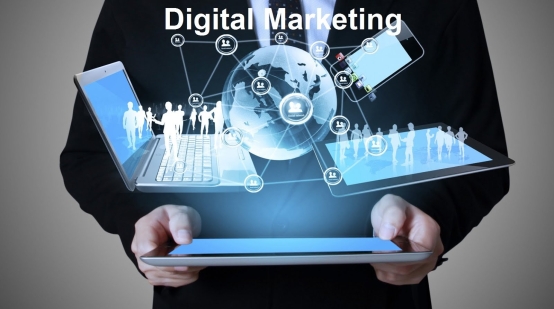Navigating Digital Marketing: A Complete Guide to Business Growth
In today’s digital-first economy, businesses rely on smart marketing strategies to succeed. Digital marketing brings together multiple approaches that help companies reach the right audience, build strong connections, and accelerate growth.
In today’s digital-first economy, businesses rely on smart marketing strategies to succeed. Digital marketing brings together multiple approaches that help companies reach the right audience, build strong connections, and accelerate growth.

Understanding Digital Marketing
Digital marketing refers to all promotional activities that leverage the internet or electronic devices. It covers a broad spectrum of strategies aimed at showcasing products, services, or brands. From search engine optimization (SEO) and pay-per-click (PPC) advertising to social media campaigns and content development, digital marketing offers countless opportunities for companies to engage customers and strengthen their market presence.
A major strength of digital marketing lies in its targeting capabilities. Unlike traditional methods, which often reach wide but less-focused audiences, digital tools allow segmentation based on demographics, interests, and online behavior. This lets businesses deliver tailored messages to the right audience at the right time, improving conversion chances and maximizing returns.
Key Components of Digital Marketing
Search Engine Optimization (SEO)
SEO improves a website’s visibility on search engine results pages (SERPs), aiming to drive more organic (unpaid) traffic. This involves both on-page and off-page practices.
On-page optimization ensures that site content and structure align with user intent. This includes keyword placement, optimized meta tags, quality headings, and mobile responsiveness. For instance, a handmade jewelry business might use keywords like “artisan necklaces” or “unique earrings” to rank for searches targeting those terms.
Off-page optimization emphasizes credibility through backlinks from trusted sites. Quality backlinks act as endorsements, boosting rankings. Methods include guest blogging, partnerships, and online directory listings.
Pay-Per-Click (PPC) Advertising
PPC, such as Google Ads, charges advertisers whenever a user clicks on their ad. These ads appear prominently on search result pages when users type in relevant keywords, driving targeted traffic quickly.
Social Media Marketing
Platforms like Instagram, Facebook, LinkedIn, and Twitter have become central to digital engagement. Through regular content, interactive campaigns, and ads, brands can build awareness, engage directly with customers, and increase website traffic.
Content Marketing
This strategy focuses on creating valuable, relevant, and consistent content to attract and retain an audience. Common forms include blogs, videos, infographics, podcasts, and e-books, all designed to educate, inform, or entertain while building brand credibility.
Email Marketing
Businesses use email to connect directly with subscribers through promotions, newsletters, and personalized offers. Lists often grow through lead magnets such as free e-books, trial offers, or discounts. Done effectively, email remains one of the most cost-efficient channels for customer engagement and retention.
Competitor Analysis in Digital Marketing
Google-Focused Agencies vs. General Digital Marketing Agencies
-
Google-Focused Agencies: Specialize in SEO and Google Ads. They excel in keyword targeting, ad placement, and maximizing exposure in Google’s ecosystem. Their strength lies in deep expertise but may limit them in non-Google channels such as TikTok or broader content marketing.
-
General Agencies: Offer multi-channel approaches across SEO, social media, email, and more. They provide comprehensive campaigns but may lack the depth of Google-specific experts.
Industry-Specific Agencies vs. General Agencies
-
Industry-Specific Agencies: These firms specialize in a particular sector. For example, industrial marketing agencies understand niche terminology and decision-making processes unique to that field. Their campaigns are precise but may not translate easily across industries.
-
General Agencies: Adaptable to different sectors, these agencies draw from diverse experiences, offering fresh perspectives. However, they may lack the specialized knowledge needed for highly technical industries.
CRM-Integrated Agencies vs. Traditional Agencies
-
CRM-Integrated Agencies: Merge marketing efforts with customer relationship management tools. By using purchase history or engagement data, they create highly personalized campaigns that increase loyalty and retention. Still, improper CRM use can weaken results.
-
Traditional Agencies: Focus more on branding, research, and creative strategy. While effective for long-term positioning, they may fall short in data-driven personalization compared to CRM-powered approaches.
Chart: Effectiveness of Digital Marketing Channels
| Digital Marketing Channel | Customer Acquisition (1–10) | Customer Engagement (1–10) |
| SEO | 6 | 5 |
| PPC | 7 | 4 |
| Social Media Marketing | 8 | 7 |
| Content Marketing | 5 | 6 |
| Email Marketing | 6 | 8 |
Q&A
Q: How much does digital marketing cost?
A: Costs vary by channel and scope. SEO can range from hundreds to thousands monthly, depending on competition and reach. PPC pricing depends on keyword competitiveness, with high-demand terms costing several dollars per click. Social media ads differ by platform and format, while content creation often requires outsourcing writers or designers. Email marketing is relatively affordable, with expenses focused on platforms and campaign design.
Q: Which digital marketing channel works best for my business?
A: It depends on your goals and audience. B2C brands targeting younger audiences may succeed on Instagram or TikTok, while B2B firms often benefit from LinkedIn. PPC works well for immediate traffic and conversions, whereas SEO and content marketing are better for long-term growth. A balanced mix usually delivers the best results.
Q: How long does it take to see results?
A: PPC delivers instant visibility once campaigns go live. SEO typically requires several months to a year to gain traction. Social media and content marketing build momentum gradually, with noticeable engagement often appearing after consistent efforts over a few months.
